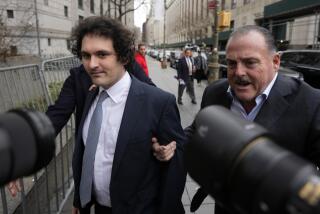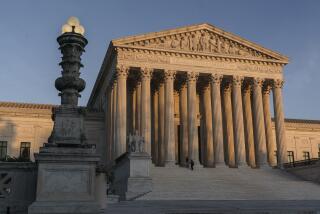U.S. turns a profit on bailout’s mortgage-backed securities
Reporting from Washington — In reaping a $25-billion profit on mortgage-backed securities, the Treasury Department showed that some bailout programs are able to make money.
But taxpayers still are likely to end up tens of billions of dollars in the red from the federal government’s unprecedented efforts to stabilize the financial system after the 2008 global credit crisis and the deep recession.
Besides the $225-billion mortgage bond program, which began during the financial crisis to keep the housing finance market afloat, the bank bailout portion of the $700-billion Troubled Asset Relief Program was the only major program so far to turn a profit.
Treasury officials said Monday that they had sold the last of the mortgage-backed securities the department had bought from mortgage finance giants Fannie Mae and Freddie Mac from October 2008 to December 2009. Including principal and interest earned on the securities, the program brought in $250 billion.
“The successful sale of these securities marks another important milestone in the wind-down of the government’s emergency financial crisis response efforts,” said Mary Miller, the Treasury’s assistant secretary for financial markets.
“This program helped support the housing market during a critical moment for our nation’s economy and delivered a substantial profit for taxpayers,” she said.
The bonds consisted mostly of 30-year, fixed-rate mortgages that were guaranteed by Fannie or Freddie, which were seized by the government in September 2008 to prevent their collapse. The Treasury bought the bonds to keep money flowing into the mortgage market, helping banks continue to make loans to home buyers as the economy struggled.
As the economy and financial system improved, the Treasury began selling the mortgage-backed securities last March. The bonds were sold slowly over the last year to avoid harming the mortgage market.
The purchase of mortgage-backed securities was separate from the bailout of Fannie and Freddie, and the price tag for them continues to climb.
As of March 13, the two companies had received a total of about $188 billion in taxpayer money to help cover losses largely from mortgages guaranteed or bought before the housing market collapse.
Fannie and Freddie have paid the government about $36 billion in dividends since the bailout began, reducing the overall cost to taxpayers to about $152 billion.
But the regulator for the firms has said the total cost of those bailouts could range from $220 billion to $311 billion by the end of 2014, depending on how the housing market performs.
TARP losses are projected to be much lower. In December, the Congressional Budget Office estimated a $34-billion loss. The Obama administration projected in its 2013 budget, released last month, that TARP would lose $68 billion.
The estimates continue to vary based on the value of government-owned stock in insurance firm American International Group Inc. and automaker General Motors Co., two large bailout recipients.
Treasury Secretary Timothy F. Geithner has said he expected the final losses from TARP would be less than $25 billion.
In early 2009, the Congressional Budget Office estimated that TARP could lose about $350 billion. But the government spent far less than the $700 billion. As of last week, Treasury had disbursed $414 billion from TARP and had collected $331 billion, including repayments, dividends and interest.
A main reason that TARP losses are relatively low is the $14-billion profit the government has made so far on payments made by banks.
Treasury pumped $245 billion into dozens of banks, and as of last week it had received $259 billion back. The profit has come largely from dividends and the repurchase by the banks of stock warrants issued to the government as part of the bailouts.
More to Read
Only good movies
Get the Indie Focus newsletter, Mark Olsen's weekly guide to the world of cinema.
You may occasionally receive promotional content from the Los Angeles Times.











